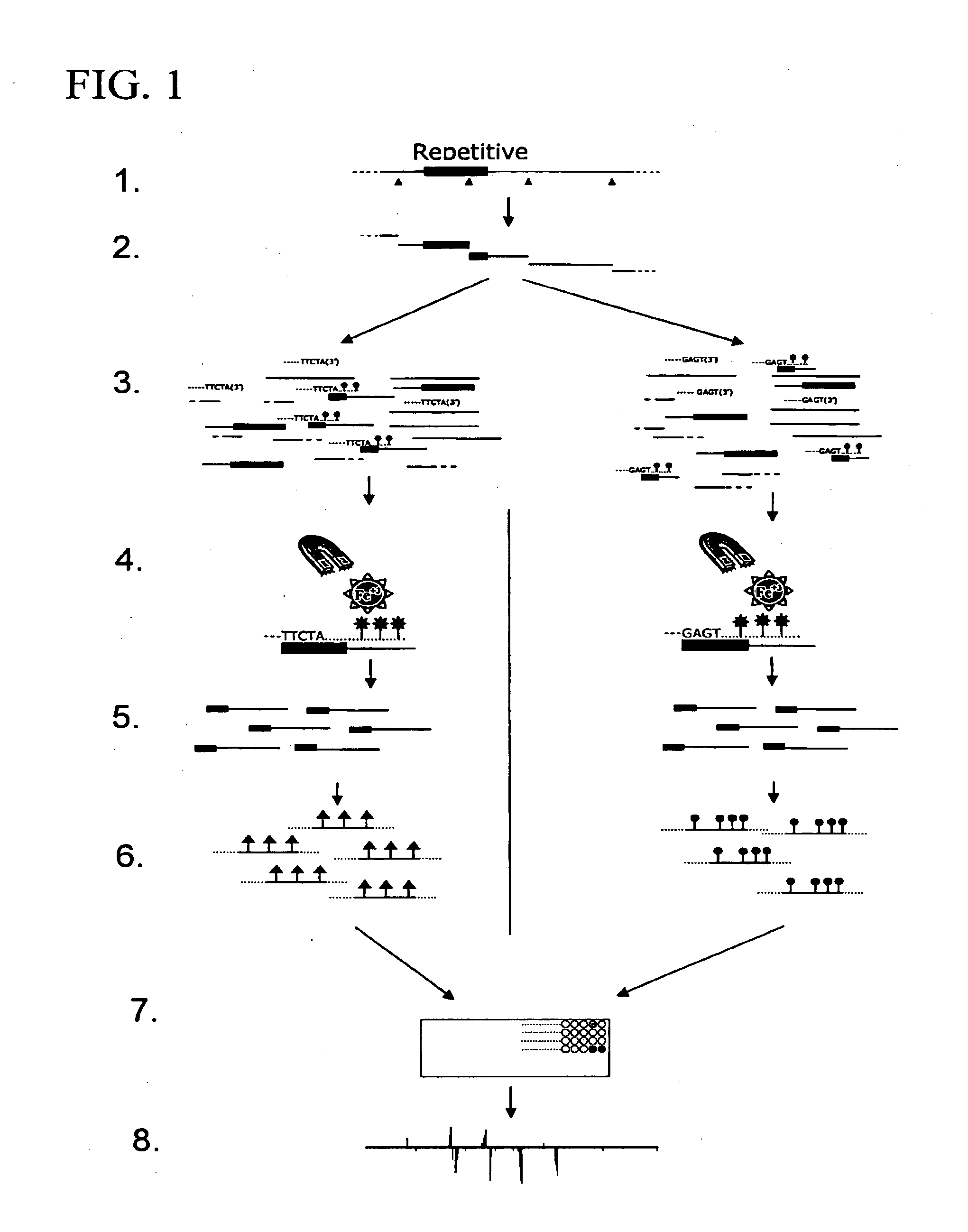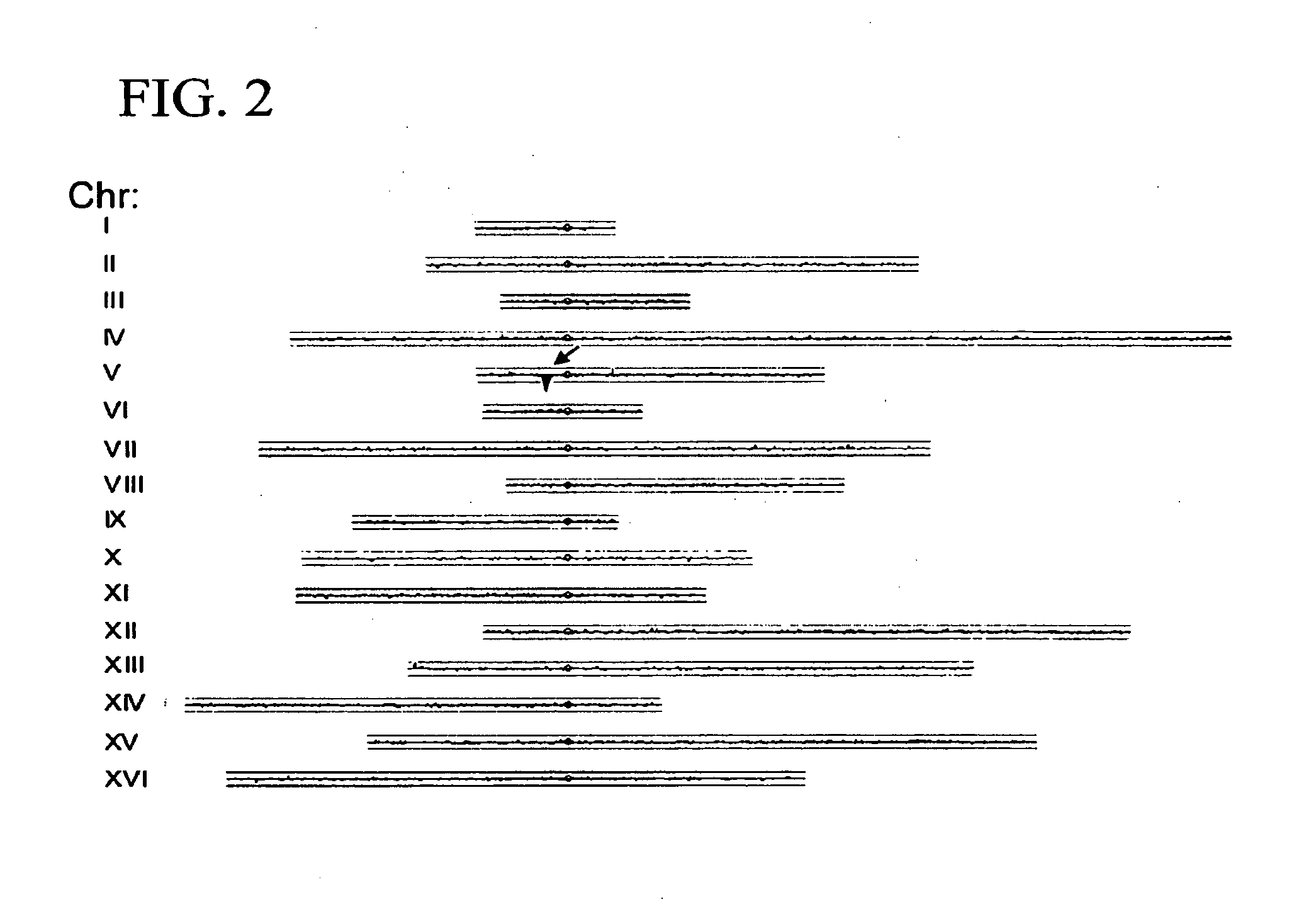Method For Identification Of Novel Physical Linkage Of Genomic Sequences
a genomic sequence and physical linkage technology, applied in the field of genomic sequence physical linkage identification, can solve the problems of difficult or impossible sequence analysis of nonfixed or copy number variable elements in the genome, not applying to other strains of the same species, and affecting the identification speed and economic
- Summary
- Abstract
- Description
- Claims
- Application Information
AI Technical Summary
Benefits of technology
Problems solved by technology
Method used
Image
Examples
example 1
Introduction
[0078]The model eukaryote S. cerevisiae has been at the forefront of studies of retrotransposons, i.e. transposons that use reverse transcriptase for their replication, and which copy and paste themselves to new genomic locations. Several distinct families of retrotransposons, or “Tys” have been identified in this organism, both anecdotally, and systematically through the genome sequencing effort. In the only fully sequenced S. cerevisiae strain, S288c, the most abundant transposons are Ty1 (31 copies) and Ty2 (11 copies). These closely related 5.9 kb full-length mobile elements consist of two overlapping open reading frames, each of which encodes several proteins. The coding regions are flanked by ˜300 bp nearly identical long terminal repeats (LTRs). Ty4 (3 copies) is a distinct and less abundant element with a similar structure. Ty3 (2 copies) is another distinct element, with a different arrangement of protein coding segments, but still with flanking LTRs. Ty5 is onl...
example 2
[0096]The following example shows how the method of the present invention can be used to extract and identify DNA associated with any specific sequence. In particular, probes were designed that would anneal to internal regions of Ty1 or Ty2, exploiting the regions of maximum differences between these two families of closely related elements. As shown in FIG. 4, when Ty1-associated fragments were labeled with Cy3 and Ty2-associated fragments with Cy5, each initial Ty1 / 2 peak could be correlated with the respective element associated with it. We extended this analysis to identify the three Ty3 full-length elements and Ty3 and Ty4 solo LTR elements in the S288c genome.
example 3
[0097]The following example shows how the method of the present invention can be extended to partially unmapped strains.
[0098]A comparison was made in the pattern of transposons in S288c with those in two common lab strains, CenPK and W303. In each of these cases, the strain was originally derived from a cross between S288c and an unrelated strain, although the detailed histories and origins are not completely documented. Previous work has shown that these strains are patchworks, with blocks of S288c sequence interspersed with blocks from the other parent (Daran-Lapujade et al., 2003; Winzeler et al., 2003). Using Affymetrix yeast tiling arrays, which are based on the S288c sequence, the patchwork nature of these strains is easily observable (FIG. 4), since SNPs are much more likely to be present and detected for segments derived from the non-S288c parent. We took advantage of this analysis to align each S288c, W303, and CenPK chromosome with the respective chromosome tracing derive...
PUM
| Property | Measurement | Unit |
|---|---|---|
| Fluorescence | aaaaa | aaaaa |
Abstract
Description
Claims
Application Information
 Login to View More
Login to View More - R&D Engineer
- R&D Manager
- IP Professional
- Industry Leading Data Capabilities
- Powerful AI technology
- Patent DNA Extraction
Browse by: Latest US Patents, China's latest patents, Technical Efficacy Thesaurus, Application Domain, Technology Topic, Popular Technical Reports.
© 2024 PatSnap. All rights reserved.Legal|Privacy policy|Modern Slavery Act Transparency Statement|Sitemap|About US| Contact US: help@patsnap.com










